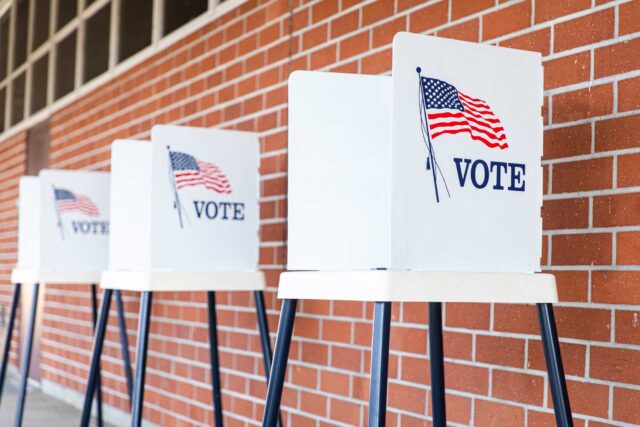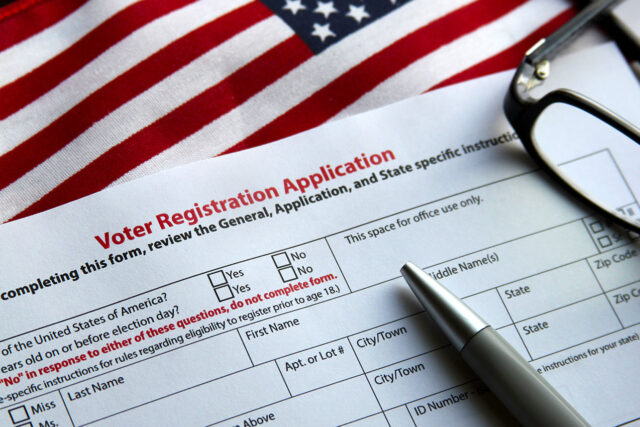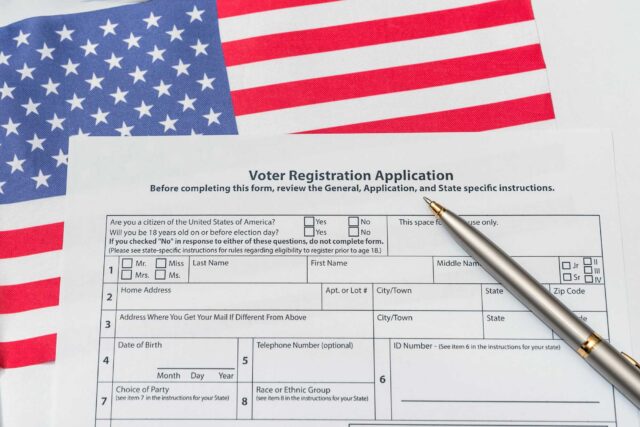Summary
In 2015, California passed major legislation to increase the state’s voter rolls by simplifying the voter registration process. Under the New Motor Voter Act, the Department of Motor Vehicles (DMV) will electronically transmit information about DMV customers who are eligible to vote to the California Secretary of State, which will add eligible customers to the voter rolls unless they opt out.
We find that this law has the potential to significantly alter the demographic composition of the California electorate, making the population of registered voters more representative of the state as a whole. Our estimates also suggest that the new system may rapidly expand the voter rolls, adding more than 2 million new registrants in the first year.
Key implementation issues will decide the impact of the New Motor Voter Act. To ensure the law’s success, the state should require DMV customers to attest to their eligibility to vote as a precondition for completing their transaction. It will also be necessary to mobilize new registrants aggressively if they are to become new voters.
New Motor Voter: A Turning Point?
California has many residents who are eligible to vote but have not registered to do so-about 7.4 million people according to the latest estimates.1 The state’s registration rate used to be higher than the national average, but it now lags behind as many other states have increased registration over the past 10 to 15 years. California’s voter turnout has also fallen behind that of other states over the same period, and low registration rates are a likely cause (McGhee and Krimm 2016). Higher voter registration and turnout rates could help improve civic engagement and make the voting population more representative of the state as a whole.
In response to these trends, the 2015 New Motor Voter Act seeks to put more voters on the registration rolls by simplifying the process of signing up to vote at the DMV. The law (AB 1461, referred to here as New Motor Voter) marks a significant change to California’s voter registration process. Slated to be implemented in July 2017, New Motor Voter requires that the DMV electronically transfer its customers’ registration information to the California Secretary of State.2 The Secretary of State then adds all customers to the voter rolls who attest to being eligible and do not opt out-that is, who do not actively decline to register.
Over time, New Motor Voter will reach virtually all California residents who are eligible to vote. The law applies to any DMV customers applying for a new driver’s license or a new state ID, or renewing or changing their address on an existing driver’s license or ID, whether in person, online, or by mail.
The law’s opt-out provision is the most critical change, since many other elements of the process have been or were already slated to be incorporated into DMV transactions. The DMV has offered voter registration to customers since 1995, when the federal National Voter Registration Act took effect. More recently, the agency has been developing a process for electronically entering new and updated registration records, and then transmitting them to the Secretary of State (along with information about those who decide not to register, so the Secretary of State can follow up).
This report seeks to set expectations for California’s new law by answering three questions:
- How might the demographics of the population registered to vote-in other words, the California electorate-change if the best hopes for the law are achieved and virtually every unregistered but eligible DMV customer registers to vote?
- How many new registrants can we expect in the first year of implementation?
- What factors influence whether people will actually sign up to vote through the new process?
In our analysis, we use the roll out of a similar law recently passed in Oregon to help set expectations for California. However, it is important to tailor these expectations to reflect important differences between the two states, including the scope of the laws and the size and demographics of each state’s population. For example, unlike in California, Oregon’s law requires that the state identify eligible voters rather than asking DMV customers to attest to eligibility.3
How Much Will the Electorate Change?
The goal of the New Motor Voter Act is “to increase the number of eligible citizens who register to vote” (California Elections Code Sec 2261(b)). If the program achieves its highest aspirations and registers as many people as possible, how will the demographics of the electorate change?
The New Motor Voter program is ultimately limited by two factors: the number of unregistered but eligible Californians who obtain a driver’s license or ID and the number of those DMV customers who decline registration. The first constraint-DMV usage-is not a significant consideration. Our calculations suggest that virtually all residents who are eligible to vote eventually obtain either a driver’s license or an ID.4 The second constraint is more meaningful. Not every eligible resident will want to be registered, and DMV customers have the ability to opt out. Oregon’s experience with automatic registration, where approximately 7 percent of potential new registrants have declined so far, serves as a guide.5 This is an optimistic assumption: the participation rate in California is unlikely to be above 93 percent, and it might be much lower.
Table 1 shows how the electorate may change under a maximally successful New Motor Voter program. The first column presents the share of various demographic groups among the population of currently registered voters, while the second column shows what might happen if the current electorate were combined with the population of eligible but unregistered residents under a highly effective New Motor Voter program. If the law succeeds, the new electorate will in many cases be notably different.
Table 1. A successful New Motor Voter program would make notable changes to the electorate
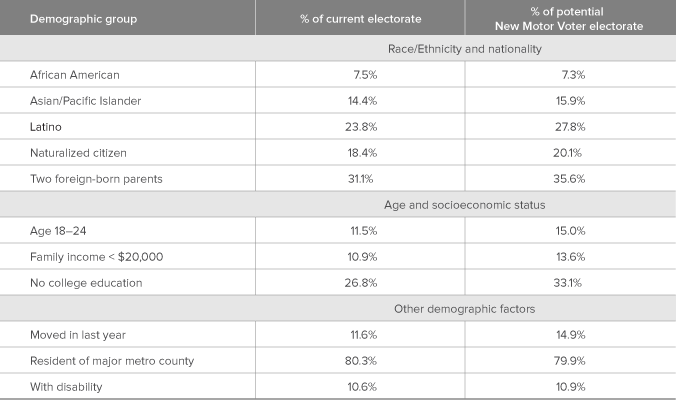
SOURCES: US Census Current Population Survey, November 2014 Supplement (registration rates); California Secretary of State (registration rates for counties); US Department of Agriculture (county metro classifications).
NOTES: Categories can and do overlap. The “major metro” counties are those that contain at least part of one of the metro areas of 1 million people or more: Alameda, Contra Costa, El Dorado, Los Angeles, Marin, Orange, Placer, Riverside, Sacramento, San Benito, San Bernardino, San Diego, San Francisco, San Mateo, Santa Clara, and Yolo Counties. The “Asian/Pacific Islander” category includes all survey respondents who considered themselves part of either group alone or in combination with some other group (e.g., “white/Asian” or “Pacific Islander/African American”).
In general, registering the unregistered population involves bringing a very different group of people into the electorate: one that is younger, more diverse, more mobile, poorer, and less educated. Figure 1 shows some of the demographic groups that will see significant changes in registration under a successful New Motor Voter program. Those without a college education would constitute 6.3 percentage points more of the registered population, the children of foreign-born parents 4.5 points more, and Latinos 4.0 points more.
Elections are decided on the margins, and these numbers suggest that a New Motor Voter electorate could shift those margins.6 These shifts would make the registered population far more representative of the total population of voting-eligible adults.
Figure 1. Several groups would grow as a share of the electorate under a successful New Motor Voter program
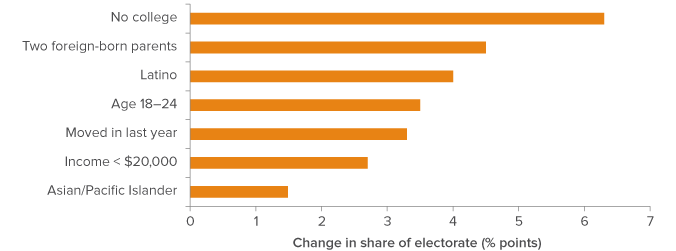
SOURCE: US Census Current Population Survey, November 2014 Supplement.
NOTE: Categories can and do overlap.
It is also worth noting that these shifts would bring the registered population closer to the population of all adults-including noncitizens who are ineligible to vote but are still affected by government policy. Figure 2 shows the potential impact of New Motor Voter in improving political representation in the electorate. The chart compares the gaps in political representation for several demographic groups in the current electorate and the potential New Motor Voter electorate, relative to all adults. For example, individuals with no college education comprise 39 percent of the state’s adult population, but only 27 percent of the current electorate, meaning that this group is underrepresented by 12 percentage points in the current electorate (shown by the top orange bar). New Motor Voter could reduce this gap to 6 points (bottom teal bar).
In all cases, the gaps are smaller under New Motor Voter, indicating the law may lead to better political representation. However, large gaps remain, particularly for children of foreign-born parents, Latinos, and those with no college education. These gaps persist because the noncitizen population differs considerably from the population of all eligible adults on these dimensions.
Figure 2. New Motor Voter has the potential to improve political representation for many groups
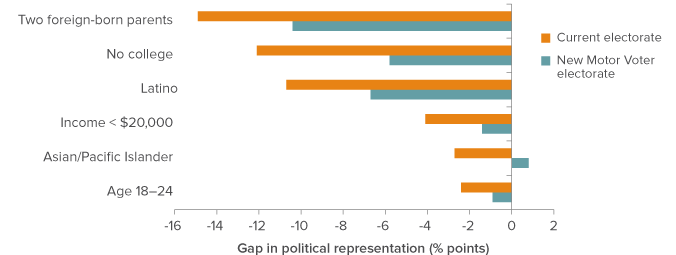
SOURCE: US Census Current Population Survey, November 2014 Supplement.
NOTES: Chart compares the gap between a group’s share in either the current electorate or the New Motor Voter electorate and its corresponding share among all adults. Negative values indicate a group is underrepresented in the electorate. Categories can and do overlap. The Current Population Survey did not ask noncitizens about mobility, so it is not possible to provide these estimates for those who moved in the last year. For more detailed estimates, see Technical Appendix B.
How Quickly Could New Registrants Be Added?
The above estimates tell us what the electorate will look like if the new law leads the great majority of eligible but unregistered residents to sign up to vote. But New Motor Voter can only add new registrants as quickly as eligible California residents use the DMV for a qualified transaction, and many DMV customers are already registered to vote under existing law.
The total number of eligible DMV transactions every year is large. Between July 2014 and July 2015, the DMV issued about 800,000 new eligible driver’s licenses and 600,000 new IDs, processed 2.2 million address changes, and renewed around 5 million driver’s licenses and 1 million IDs. How many of these transactions might result in new registrants who would not have been captured in the current system?
Two main uncertainties complicate predictions about the rate of registration growth under New Motor Voter. First, as the system adds new registrants there will be fewer potential registrants left to add, making the law a victim of its own success. The greatest potential for New Motor Voter lies at the outset. Accordingly, our analysis makes projections for the first year of implementation.7
Second, it is not clear how many eligible residents will agree to be registered under the new program. As described in more detail below, the program will likely have a high rate of adoption, though we cannot yet be certain about this success. To account for this uncertainty, we explore three scenarios: low adoption (10% of those who are given the opportunity choose to register), medium adoption (50%), and high adoption (93%, the current rate of adoption seen in Oregon).
Figure 3 presents the results of these scenarios, which suggest New Motor Voter could have a significant impact. Even the medium adoption rate produces more than 1.3 million new registered voters, increasing the state’s registration rate by more than 7 percent. The high adoption rate would result in about 2.4 million new registrants, an increase of almost 14 percent. A low adoption rate, however, would only increase the registration rate by 1.5 percent or about 260,000 new registrants-a change hardly more noticeable than the normal up and down of registration over time.
Figure 3. New Motor Voter could add more than 2 million new registrants
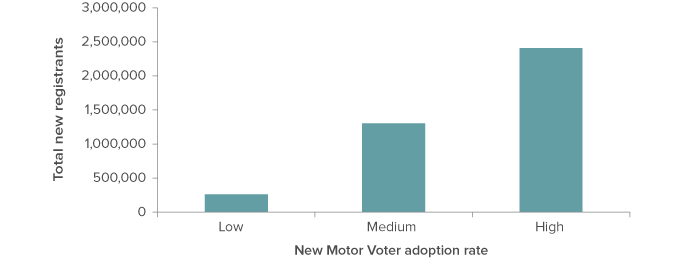
SOURCES: US Census Current Population Survey, November 2014 Supplement (estimates of current registration rates by demographic categories); California Department of Motor Vehicles (outstanding driver’s licenses, number of renewals, address changes, and new driver’s licenses); US Department of Transportation (estimates of outstanding driver’s licenses by age).
NOTE: For detailed estimates, see Technical Appendix C.
Figure 4 shows the projected growth of registered voters across the state under New Motor Voter, based on the high adoption scenario of Figure 3. Increases in registration will likely vary a great deal across counties, from under 10 percent in Sierra and Alpine Counties to around 20 percent in Kings, Tulare, and Merced Counties.8 Large metropolitan counties are likely to see only a slightly smaller increase (13.7%) than rural counties (14.8%).
Figure 4. Growth in voter registration will vary across the state
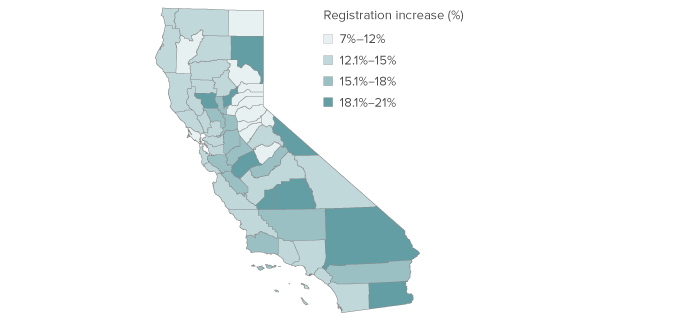
SOURCES: US Census Current Population Survey, November 2014 Supplement (estimates of current registration rates by demographic categories); California Secretary of State (current registration rates by county); American Community Survey 2009-2013 (county migration flows); California Department of Motor Vehicles (county estimates of outstanding driver’s licenses, estimated number of renewals, address changes, and new driver’s licenses); US Department of Transportation (estimates of outstanding driver’s licenses by age).
NOTE: For detailed county-level estimates, see Technical Appendix D.
Mobility is the main driver of variation in projected registration rates across counties. Counties with a higher share of residents who have recently moved into the county will likely have more new registrants. Mobility trumps the other factors behind our county estimates-age and the number of outstanding driver’s licenses-because mobility varies far more from one county to the next than either of these other factors.
The overwhelming majority (83%) of new registrants will come from renewals (50%) and address changes (33%). Approximately 14 percent of new registrants will come through new driver’s licenses and 3 percent through new IDs. Compared to DMV transactions as whole, new registrations through new driver’s licenses and address changes are somewhat overrepresented because fewer of these customers are registered in the first place, leaving more potential new registrants for the New Motor Voter program.9
How Many Will Agree to Register?
The above analysis suggests that there are enough DMV customers who are eligible but not registered-on the order of 2.6 million each year-to produce a substantial number of new registrants under New Motor Voter.10 As a result, the critical limiting factor will be not the size of the applicant pool but the rate at which those applicants agree to be registered. If the adoption rate is low-if eligible customers do not fill out the form or do not agree to be registered-then New Motor Voter will have only a limited impact.
If the DMV requires customers to attest to their eligibility to vote, high registration rates will be likely.
Research has repeatedly shown that participation in programs is strongly influenced by small alterations to the customer experience. Most notable is the distinction between opting out and opting in. Is the customer automatically placed in the program and given the opportunity to decline (opt out), or required to actively sign up in order to participate (opt in)? Opt-out programs have significantly higher participation rates than opt-in programs, even if both opting out and opting in are made as easy as possible. Participation rates higher than 50 percent would not be unusual for any opt-out program (Thaler and Sunstein 2008).
The opt-out/opt-in distinction helps us understand the extremely high adoption rate following the implementation of Oregon’s new voter registration law. In Oregon, the state identifies eligible voters using DMV records and sends a card in the mail that lets them either decline to register or choose a political party. After 21 days, all these voters are added to the rolls unless they have returned the card indicating they decline. This firmly establishes the program as opt out, since the onus is on the DMV customer to decline to be registered. Moreover, the system makes opting out relatively difficult, because it requires customers to notice a card in the mail that they were not expecting, fill out that card, and then send it back if they want to exercise their opt-out rights.
In contrast, California’s New Motor Voter law may not result in an opt-out system. Unlike in Oregon, DMV customers in California will be registered only if they affirm their eligibility to vote. After receiving records from the DMV, the Secretary of State is required to register anyone who attests to being eligible and who does not explicitly decline to be registered. Thus California citizens who affirm their eligibility but do not answer the registration question will still be registered. This means the New Motor Voter program starts as an opt-in system until the customer confirms eligibility, after which point the system defaults to registration.
The implementation of the eligibility question-which has yet to be decided-is a crucial factor in the eventual adoption rate. If the DMV requires customers to attest to their eligibility to vote, high registration rates will be likely, though perhaps still not as high as in Oregon.11 In fact, making the eligibility question mandatory is more important than the clarity of the form’s design, at least as far as expanding voter rolls is concerned.12 In sum, the main obstacle to success in the New Motor Voter program is the risk of low participation on the eligibility question, and this can be solved by making that question mandatory for customers to complete their transaction with the DMV.
Conclusions
California’s New Motor Voter law has tremendous potential to increase the number of registered voters in the Golden State. If the adoption rate is comparable to Oregon’s, the population of registered voters will become notably younger, more diverse, poorer, and less educated. This would bring the demographics of registered voters much closer to representing the demographics of all eligible voters and all adults.
The transition to this new electorate could happen faster than many have assumed. If implemented effectively, New Motor Voter could increase the registration rolls by more than 10 percent in the first year in most parts of the state. This reflects the sheer volume of customers who cycle through the DMV for new driver’s licenses, address changes, and renewals on existing driver’s licenses.
The main constraint will be the law’s implementation. For maximum impact, customers should be required to attest to their eligibility to vote as a precondition for completing their DMV transaction. Without this step, the system’s success hinges on how aggressively the eligibility question is pressed on DMV customers.
The New Motor Voter system will likely produce other benefits as well. County registrars devote substantial resources to maintaining a clean and up-to-date voter file, including the time-consuming chore of entering new registration and change-of-address forms by hand. The state has made a number of changes in recent years that reduce that burden, but New Motor Voter will still help upgrade the system further by increasing the number of digitized DMV registrations.13
However, even if New Motor Voter does significantly boost registration, it does not solve the problem of low turnout; it simply removes one barrier to participation. Many of the new registrants will be coming from disadvantaged communities and will be disengaged from politics, never having been contacted by any candidate or campaign. These new registrants will receive official election information from state and local government agencies, and the reform will have produced a net gain in voting even if only a small number turn out to vote. But for substantial gains-and to achieve the more representative electorate highlighted in this report-there will have to be a significant and ongoing effort to reach out to these new registrants and get them to vote.
In fact, one potential hurdle for voter turnout is the DMV’s relatively new two-step registration process, where in-person customers who agree to register to vote must use a separate computer terminal to identify their political party and language preference. Those registrants who fail to complete the second step may not be registered with the party or language preferences they expect, which could create additional obstacles to voting. Absent any changes, this two-step process will be the backbone of the New Motor Voter system as well.14 This simply reinforces the need to take engagement and outreach seriously-registration under New Motor Voter is not the same as voting.
As New Motor Voter implementation moves forward, open access to data will be critical. To enable evaluation of the law’s impact, the California Secretary of State and the DMV should track the following metrics, preferably by flagging them in publicly available data sets:
- How many DMV customers answer the eligibility question and how many leave it blank?
- How many DMV customers attest to eligibility but do not answer the registration question?
- How many DMV customers attest to eligibility and agree to be registered but do not fill out any additional information?
- How many new registrants use the New Motor Voter system and how many register some other way?
- For those who use New Motor Voter to change their registration, do they continue to be registered with the same party and with the same language preferences?
Voter participation in California stands at a crossroads. By fundamentally altering the process of signing up to vote, the New Motor Voter system could radically increase registration and improve the state’s sluggish turnout rate. To achieve these outcomes, the state should require DMV customers to verify their eligibility and should build a comprehensive data collection system to help ensure the law is working as intended. If implemented successfully, New Motor Voter could have a far-reaching positive impact on political representation and civic engagement in California.
Topics
Political Landscape


